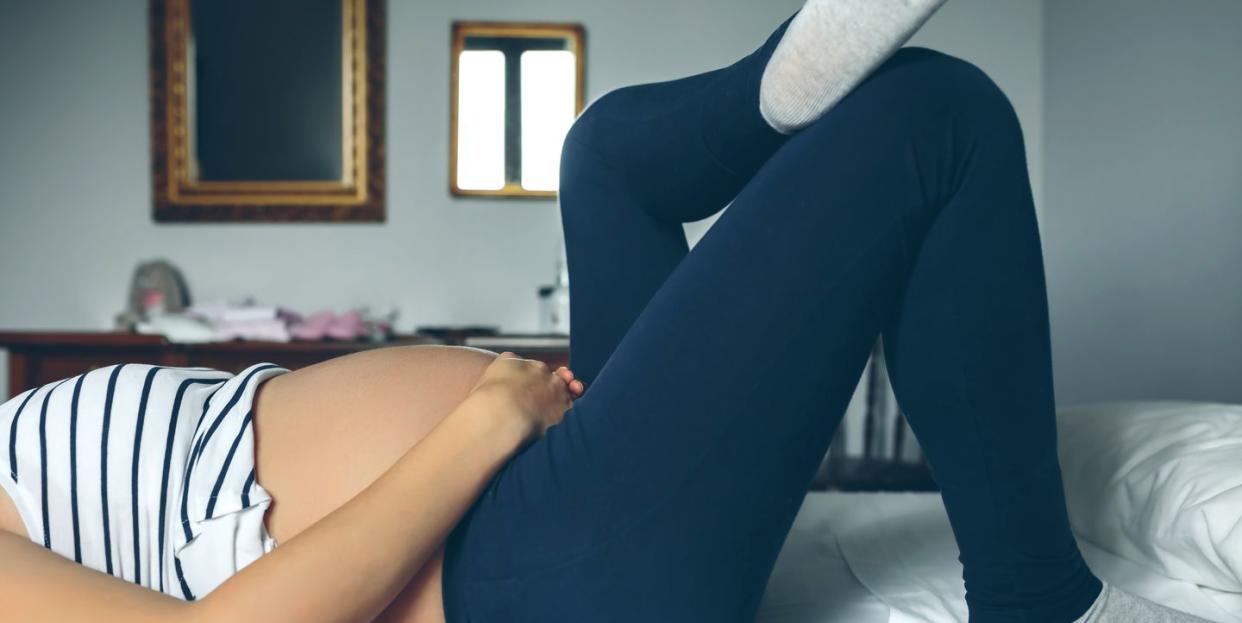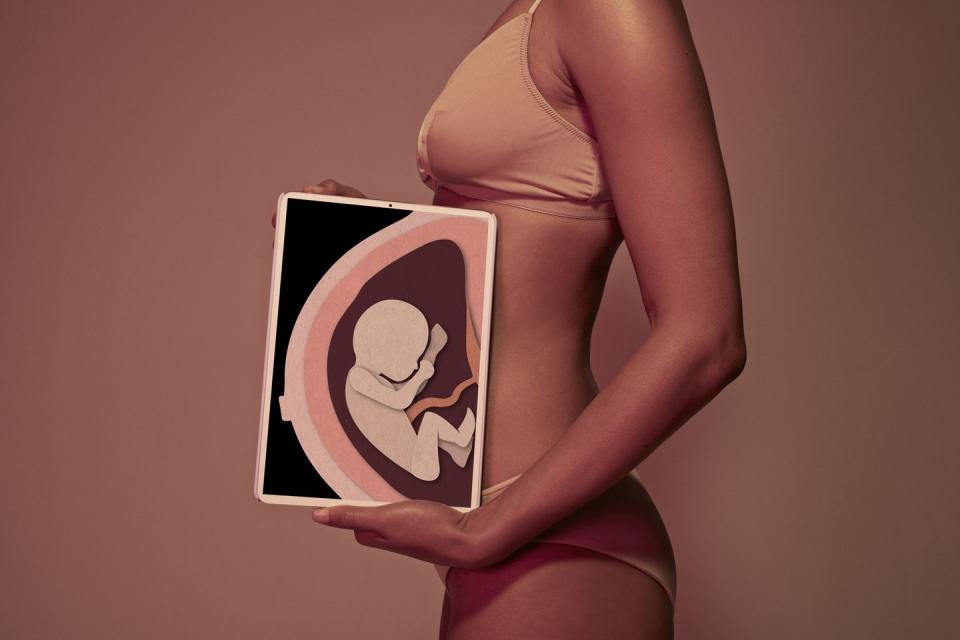What to Expect (From Your Bras) When You're Expecting

The one sure thing about modern pregnancy is that you are never at a loss for information. The content is deep, with everyone from mommy bloggers and celebrities to royals around the world weighing in, advising, and explaining what they do.
The quandary that's thrown me for the biggest loop so far hasn't been about my body or the baby's development, though, but it's is definitely foundational in nature: When am I expected to pony up the cash for a new, larger bra? And how many times should I be expecting to do it throughout these next nine-ish months?
Before I was even at the stage of announcing my news to friends and family I'd noticed a subtle change. Certain tops and dresses were tighter and things looked fuller; by month three I'd started to notice the bands on my bras were feeling uncomfortable and leaving red indents. Sam Foster, the director of retail at Lively, says I was right on target.
"Most women's breasts change the most dramatically in the first trimester," she tells me, explaining that it's when most customers start needing to size up. "Around weeks 13 to 15 breasts generally stop growing at such a fast rate, so it's a smart time to go for a maternity fitting." There's a good chance you'll only need to size up once, too, though Foster says some people need an additional size around the seven-month mark. "It largely depends on how much weight a woman gains throughout pregnancy."
Below, what she says to consider when shopping:
Your bra should fit well on the tightest hook if shopping around the 13-15 week mark
If you're buying a bra when not pregnant, you actually want the bra to fit best on the loosest setting so you can make it tighter as it stretches out. "Throughout the duration of your pregnancy your ribcage will expand and you'll want to be able to loosen the band," Foster says.
Cups shouldn't gape, but a little extra space is okay.
Even if breasts don't change dramatically in size throughout the last two trimesters, they may increase in fullness or density.
Opting for a traditional t-shirt bra or full-coverage cups is smart.
Most expectant women tend to prefer more coverage and comfort, including wider straps that will offer more support.
Underwire is fine to wear
But most people find wireless to be the most comfortable (and more giving for size fluctuations).
"Bras for, during, and after pregnancy is a key topic of conversation in the feedback received from our community," agrees Michelle Lam, the co-founder and CEO of True&Co. "Every woman is different. Genetics, lifestyle, or just plain luck can make each woman’s journey through pregnancy and nursing so unique."
It's why hard-and-fast "rules" can be hard to come by, but modern moms can benefit from the internet's obsession with quiz-based content.
"I'm really skilled at using e-commerce tools for the best shopping success. They're super beneficial with my busy lifestyle and travel schedule," shares Allie Fister, first-time expectant mother and founder of Bollare Communications (the PR firm who represents True&Co). "When I realized I needed to change my bra size in the coming months-maybe I had a few more weeks, maybe days-I immediately retook True&Co.'s Fit quiz to help me figure out my new sizing. I'm planning on taking it after pregnancy too to figure out my post-baby fit."

If you're numbers-prone and still after a more specific formula, ThirdLove Chief Creative Officer Ra’el Cohen is helpful. "We recommend purchasing a bra that is one full band size and one to two cup sizes bigger than your normal size," she says. "If you were a 34C, try a 36C or 36D."
All the experts I chatted with said their bralette styles are routinely popular with pregnant women, likely due to comfort factors and because it's going to give you more mileage as your size changes. True&Co.'s cult-favorite True Body bras can be the ideal answer and are a no-brainer when it comes to sizing (pre-pregnancy I was a small; I'm swapping up to a medium now for more room).
Lam says they're also a perfect example of how women can get away without buying a true-blue nursing bra. If you're interested in finding a "regular" style that'll pull double-duty post-baby, look for the following:
Super soft fabric that'll feel good against sensitive breasts (and nipples).
The ability to be wadded up easily. "Accidents happen, milk leaks, babies leak," Lam offers. "Instead of walking around in a wet bra, you can carry an extra in your diaper bag with it taking almost no space."
V-neck silhouettes can be moved to the side for breast-feeding.
Removable pads which can be switched out with nursing pads.
And if you do decide to get a proper nursing bra, don't buy it too early.
"Wait until the last possible moment of pregnancy to purchase a nursing bra. That's when you'll be be best able to anticipate your postpartum size," Foster advises. "First-time moms don't know how much milk they'll produce or their breasts will fluctuate during feeding cycles. Allowing your body some time to find its rhythm will give you a better sense of what size nursing bras you need."
And while the amount of bras you need throughout your pregnancy follows the same rule of thumb as always-three to six per Foster-you might need more post-baby. "It's important to use clean nursing bras while breastfeeding," Cohen explains. "We see new moms buying multiples so they have a few on hand." The exact number might depend on how you feel about laundry: "The more you buy, the less frequently you have to wash them."
I am only halfway through this pregnancy and can already say with confidence that less laundry = a very good thing.
('You Might Also Like',)

